FIGHTING TRUCKING’S OWN PANDEMIC
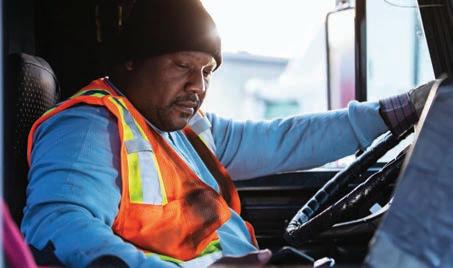

For three years now the IMTA has been leading the charge to make meaningful changes to the tort system in Iowa. Progress has been made, but an uphill battle looms.

 Issue 1, 2023
Issue 1, 2023


THE ROAD TO IMTA'S WORKERS' COMP PROGRAM
NOW CREATED BY THE TRUCKING INDUSTRY FOR THE TRUCKING INDUSTRY WWW.ALLIANCEINTERSTATERISK.ORG
BEGINS
What Lies Ahead with CSA Changes p22
CSA has been around since 2010 and while the idea of CSA may sound like old news, the talk of significant changes to the Safety Management System (SMS) is just beginning.

Celebrating
The IMTA Leadership Program has had a significant and measurable impact on the association and Iowa’s trucking industry since its inception in 1993.



FEATURES
SPONSORS
ISSUE 1, 2023 1
1, 2023
OUR STAFF Issue
of Leadership Program p28
30 Years
p3 Chairman’s Message p5 President’s Message p6 IMTA Strategic Plan p10 Iowa Update p12 National Update p15 ATA Update p16 ATRI Update p18 Human Resources Insight p21 Health & Wellness p22 Safety Update p26 Economic Update p28 Next Generation p32 Award Winner Insight p37 IMTA Update p40 Final Thought
IFC Alliance Interstate Risk p2 MHC Kenworth p4 Midwest Peterbilt Group p8 Thompson Truck & Trailer p9 Truck Center Companies p14 Truck Country p20 IMTA Cornerstone Sponsors p24 Great West Casualty Company p25 Renewable Energy Group p30 TCI Business Capital Thermo King Sales & Service p31 GTG Peterbilt Ziegler CAT p36 Quality Services Corp. Trivista Companies p38 Central Trailer Service IBC TrueNorth Companies BC Midwest Wheel Companies IOWA MOTOR TRUCK ASSOCIATION 717 East Court Ave, Des Moines, IA 50309 515.244.5193 | iowamotortruck.com
President & CEO
Director of Communications,
&
ALLISON MEINERS Director of Safety & Member Services
KRIEGEL Events & Education Manager emily@iowamotortruck.com
BRENDA NEVILLE, CAE
brenda@iowamotortruck.com JANELLE STEVENS
Education
Events janelle@iowamotortruck.com
allison@iowamotortruck.com EMILY
KENZIE LUSTER Building & Office Manager kenzie@iowamotortruck.com GARY HANDLEY Special Projects Coordinator gary@iowamotortruck.com KEVIN WILLIAMS Special Projects Coordinator kevin@iowamotortruck.com MP DESIGN Design & Cover Illustration MPDesign.biz

Dealership Leasing & Rental Truck Source Carrier RoadReady TRP Des Moines MHC Kenworth (844) 438-5899 Dubuque MHC Kenworth (833) 268-2922 Omaha MHC Kenworth (844) 438-5906 Cedar Rapids MHC Kenworth (844) 435-5789 Quad Cities MHC Kenworth (844) 435-5785 Lincoln MHC Kenworth (844) 438-5903 Waterloo MHC Kenworth (833) 961-4216 125+ LOCATIONS IN 18 STATES
VIEW OUR FULL LIST OF LOCATIONS & SERVICES, VISIT MHC.COM
TO
I was part of history on February 23rd when the Iowa Senate passed legislation aimed to curb lawsuit abuse (SF228). This has been a top priority for the Iowa Motor Truck Association for three years and I am very proud that the Iowa Senate provided the leadership to get this passed.
There were 30 Republican Senators that provided an important YES vote that evening and to my colleagues in the Senate and our fearless leader Jack Whitver, I extend my thanks and appreciation.
I think it is noteworthy to point out that this legislation had even more votes in the Senate than the medical malpractice tort reform legislation which is an important testament to the number of friends the Iowa trucking industry has in the Iowa Sente. We still have one more important step before it lands on the Governor’s desk and that is passage in the House. This continues to be a challenge because we are dealing with many more legislators. There are 64 Republicans in the House versus 34 Republican Senators. Getting to the magic number of 51 YES votes by House Republicans is now our primary focus.
The day after the debate on the Senate floor, a group of trial attorneys placed ads in the local papers in my district. The attack ads were full-page four-color attack ads filled with untruthful information.
Unfortunately, “dirty politics” was in full force with those ads and our opponents (trial bar) clearly retaliated because we are pursuing legislation that will hurt their pocketbooks.
Greedy attorneys are bogging down our legal system. For every illegitimate lawsuit they file, a legitimate one gets pushed back. It is because of these ambulance-chasing attorneys (they are the ones with the billboards up, the ones who have commercials on 2 a.m. TV, etc.) as to why WE NEED TORT REFORM in Iowa.
It is NOT about trucking companies avoiding responsibility. It is simply slowing down the crazy number of lawsuits that have NO merit to them.
Their attacks suggested that I had a conflict of interest and should not have voted on the bill. However, they did not tell the Representatives and Senators who are also attorneys (I’m guessing there are 20 of them) to do the same thing.
Attorneys in this state have way more to lose financially with our legislation than what anyone else has to gain! Slowing down this craziness was the basis of this legislation and I am extremely proud to support this important legislation and even more proud that our association had the courage to make this a priority.
When we get this passed, it will be the most important legislation we have passed in the history of IMTA and while all IMTA members will be impacted so will a whole lot of other folks in this state – anyone with a commercial motor vehicle and if that isn’t a reason to stand up and support something, I don’t know what is.
ADRIAN DICKEY IMTA’s Chairman of the Board
IT IS NOT ABOUT TRUCKING COMPANIES AVOIDING RESPONSIBILITY. IT IS SIMPLY SLOWING DOWN THE CRAZY NUMBER OF LAWSUITS THAT HAVE NO MERIT TO THEM.
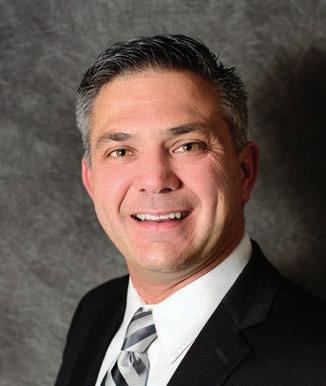
ISSUE 1, 2023 3 CHAIRMAN'S MESSAGE

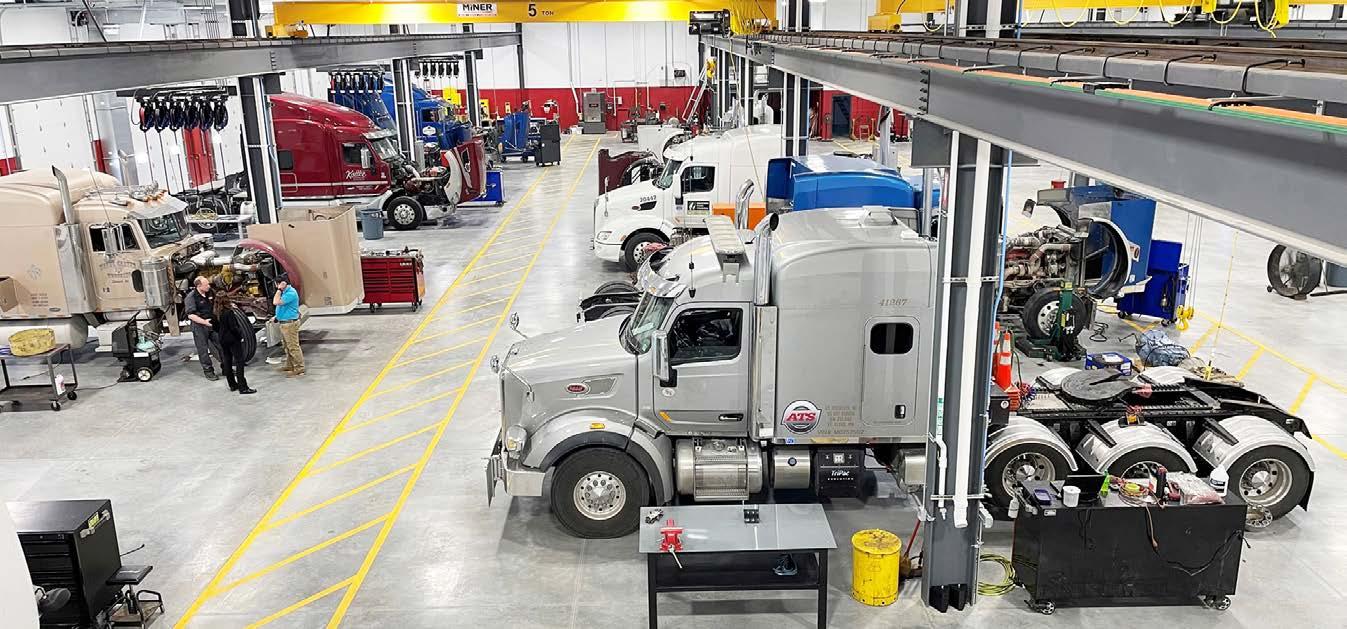










MIDWEST PETERBILT GROUP NEW TRP LOCATION in O’Neill, NE Truck Sales Parts Service Body Shop l l l l IOWA NEBRASKA S.D. Mo. Wis. Ill. Minn. I-80 US-81 I-80 I-35 I-29 NORFOLK SIOUX CITY LINCOLN DES MOINES COUNCIL BLUFFS TRP OF O’NEILL www.pbtruck.com 800-444-7383 • www.pbtruck.com
Legislation to Protect the Injured - Not the Lawyers
“If you got it, a truck brought it,” is not just a catchy phrase. It’s a testament to the fact the trucking industry drives our economy. We deliver everything including peace of mind. When trucks are rolling, products are being delivered. While the nation was reeling from Covid 19, it was trucks helping us recover from the pandemic.
But now the trucking industry is fighting its own version of a pandemic. A pandemic of trial lawyers who have targeted the trucking industry for their own profit. Need proof? Just google “how to sue a trucking company” and you will quickly find that suing trucking companies is a cottage industry. Trucking has become the target of trial lawyers who view the industry as a cash cow for accidents and frivolous suits. The justice system exists to provide justice for injured parties. When a truck driver is at fault the injured parties should be compensated. No question about it.
But verdicts or settlements of 10 million or more for non-economic damages reek of exploitation and profiteering by trial lawyers. Are the victims really being served? Runaway verdicts hurt everyone, not just trucking companies. Because transportation is essential for both the business and the private sectors, every consumer experiences the cost increases caused by this overly litigious environment. The mere threat of these unending frivolous lawsuits has driven up costs for all trucking companies. Costs passed on to every consumer.
For three years now IMTA has been leading the charge to make meaningful changes to the tort system in Iowa. The proposed legislation ensures that all injured parties are one hundred percent compensated for their injuries, whatever that cost may be now or in decades to come (economic damages). The legislation also allows for a negligent driver to face unlimited punitive damages if they are found by a jury to be negligent. If the driver of a commercial motor vehicle is impaired due to drug or alcohol use and causes an accident, they will not get the protection of a cap on non-economic damages.
To suggest that the trucking industry is somehow trying to seek immunity through this legislation is offensive, insulting and simply inaccurate.

This legislative effort was launched to provide a level of predictability for the exposure of a driver or owner of a commercial motor vehicle. More importantly we are seeking to provide common-sense guidance to emotionally charged court room environments that produce unrealistic verdicts for non-economic damages.

This is an important fight, a worthy fight and one that will continue to be at the center of our attention for the foreseeable future. The good news, we have made more progress this session than in previous years. The legislation passed out of the Iowa Senate. The bad news, there is still a lot of work to do and until we get this to the Governor’s desk, we can’t and won’t declare victory. We will continue to give 100% to this fight.
We could not have gotten this far without you. Your help has been pivotal and inspirational. I couldn’t be more proud of the manner in which IMTA members have stepped up and gotten involved.
We will continue to seek your help and assistance and I remain confident that there will be a day when we will all be able to celebrate a very big victory when this important legislation is signed into law.
ISSUE 1, 2023 5 PRESIDENT’S MESSAGE
BRENDA NEVILLE IMTA President & CEO
TO SUGGEST THAT THE TRUCKING INDUSTRY IS SOMEHOW TRYING TO SEEK IMMUNITY THROUGH THIS LEGISLATION IS OFFENSIVE, INSULTING AND SIMPLY INACCURATE.
IMTA’s Greatest Asset: A Professional Staff that is Committed and Dedicated to Serving the Membership
Janelle Stevens
Director of Communications, Education, & Events
12 years
Janelle Stevens is responsible for overseeing and implementing professional events and valuable education programs for the association. She also oversees the communications activities for IMTA. Janelle is a native of Illinois, a graduate of Iowa State University, and resides in Ankeny with husband Andy, their beautiful 6-year-old daughter Mara, and beloved dog Herman.
Allison Meiners
Director of Member Services & Safety
2 years
Allison Meiners is responsible for the member services silo which focuses on several different programs to serve the membership including membership recruitment and retention. She also oversees the non-dues revenue programs and also provides oversight for IMTA’s safety and regulatory compliance outreach efforts. Allison is a native of southwestern Iowa and graduated from the supply chain management program at Iowa State University. Her and her husband Matt have 4 children and reside in Polk City.
Emily
Kriegel
Education & Events Manager
2 months
As the newest member of the IMTA, Emily Kriegel has already made a positive impact on the events and education department not only due to her experience but her professionalism and enthusiasm. Emily hails from Grinnell and graduated from the University of Northern Iowa. She and her fiancée Max live in Urbandale and are knee-deep in planning their November wedding.
Kenzie Luster
Financial Administrative Assistant/Board Secretary
4 years
Kenzie joined the Association in January of 2019 and has served in many different roles since starting at the IMTA. However, in 2020, she moved into the financial assistance role. Kenzie’s attention to detail as well as her savvy in dealing with vendors has made her a valuable addition to the financial oversight of the association. Kenzie, a graduate of the University of Iowa, resides in White Oak with her husband Jonathan.




Gary Handley
Special Projects: 3rd party CDL Testing
4 years
Gary Handley is a valuable addition to the IMTA staff and their ongoing efforts. Initially hired to help with special projects, he now focuses primarily on IMTA’s 3rd party CDL testing and IMTA’s show trailer. Gary covers all the responsibilities needed to keep the IMTA Show Trailer in top condition as it travels throughout the state. Gary also has 40 years’ experience in the industry from being a driver to a safety director and assists where needed on special projects that capitalize on his many areas of expertise.
Kevin Williams
Show Trailer: School Liaison
2 Years
Kevin assists with IMTA’s monthly member outreach efforts and oversees IMTA’s important outreach efforts that focus on the network of public and private schools throughout the state. With nearly 40 years as an educator and a school administrator, Kevin provides valuable leadership and expertise in IMTA’s ongoing workforce efforts targeted at young Iowans.


IOWA TRUCKING LIFELINER 6 IMTA STAFF
The Iowa Motor Truck Association is proud of the professional staff that shows up every day to give 150% to the mission of the association. Every individual takes great pride in their work and is always committed to doing the very best job they can in serving the dedicated members of the Iowa Motor Truck Association.
2023 Strategic Plan: Looking towards the future
IMTA volunteer leaders have always exercised a very disciplined and strategic approach in their efforts to drive change for Iowa’s trucking industry. For the last decade, gathering member feedback, hosting member focus groups and listening sessions have enabled the membership to play an important role in the development of valuable strategic plans that guide the association throughout the year. With an industry that is as dynamic and fast paced as trucking, the association must be as equally dynamic and nimble in serving its membership. Having a plan to guide the association in its efforts is paramount and the 2023 IMTA strategic plan is already being implemented on many different levels.
2023 GOALS (Core Competencies/Goals and desired outcomes for the upcoming year):
EXTERNAL:
I. Taking on the Trial Bar – legislative initiatives and strengthening our member’s defenses/toolkit.
1. Legislative initiatives – pursuing 3-part legislation in the 2023 Iowa session
2. Education for members to be better prepared, educated, and informed to minimize exposure
3. Staying on top of this issue by monitoring and following national developments/trends
II. Workforce initiatives to attract people into our industry
1. Outreach activities with Iowa schools – show trailer and driving simulator
2. Look for additional partners – FFA
3. Continue to pursue pilot program at high schools for CDL training
4. Launch executive workforce committee through the Foundation
III. Leadership development – identifying future leaders for the association.
1. Continued development of ongoing leadership education sessions
2. Board succession program – actively engaging and training future board leaders
3. Providing tools to members to be successful leaders
IV. Best in class in serving the IMTA membership.
1. Develop and implement an effective outreach program to always stay on the “pulse” of the member’s needs & priorities
2. Collect member feedback through regular surveys, annual focus groups, and in-person meetings and events
3. Environmental scan to gain new ideas and insight on what is working in other associations
V. Strengthening the Iowa Motor Carriers Foundation
1. Effectively communicate the vision and mission of the Foundation
2. Identify staff resources to support the Foundation to reach outlined goals and objectives for 2023
3. Develop a plan for ongoing funding and financial support of the Foundation
MISSION
Reason for organization’s existence. Promote the success of trucking in Iowa.
INTERNAL:
I. Strengthening and investing in the infrastructure of the IMTA Headquarters
1. West Wing Renovation – creation of a state-of-the-art Conference Center
2. Replacement of the original roof
3. Updates to a list of short- and long-term infrastructure
II. Investments to better serve the IMTA membership.
1. Invest in a new database system – Growth Zone
2. Development of new website
3. Continued investments in the IMTA Show Trailer and Outreach program
4. Invest in the professional staff – hiring additional people, if needed, and giving the current staff the tools, guidance, and resources to always perform at the highest level
III. Securing the resources to achieve short- and long-term goals.
1. Total rebuild of the IMTA Political Action Committee - establish goals, objectives, and fundraising strategies
2. Fundraising plan for the Foundation - ongoing long term financial support plan (Legacy Program)
IV. Strengthening IMTA’s financial foundation.
1. Development of strategic plan to identify additional revenue sources –non-dues revenue, Iowa Truck Services
2. Review and development of a strategic approach to IMTA reserves, investments, floor?, ceilings?
3. Launch of workers comp program with Alliance Interstate Risk (AIR)
V. Continued emphasis and support of strategic approach to everything we do at IMTA.
1. Increased awareness of long view – what is on the horizon for trucking and for IMTA
2. Creation of task force groups to support this strategic business model –environmental and sustainability task force
3. Continued development of CEO succession plan
VISION
Description and aspirations on how organization will be perceived.
IMTA strives to be the most reliable, credible, and effective resource and voice for Iowa’s trucking industry.
VALUES
Guiding principles for the organization.
Driven to provide the highest quality of service, support, and assistance to the membership.
ISSUE 1, 2023 7 IMTA STRATEGIC PLAN






TRUCK & TRAILER HOMPSON HEY DUBUQUE, WE MOVED! Thompson is NOW OPEN at our brand new, state of the art facility along Highway 20 west of Dubuque, on the new Southwest Arterial exit. 6800 Boulder Brook Ct. Dubuque, IA 52003 (563) 557-8170 THOMPSONTRUCK.COM Thompson Truck & Trailer





Authorized warranty. Certified technicians. 17 locations | PARTS | SALES | SERVICE www.tcctrucks.com OMAHA 800.777.2440 14321 Cornhusker Rd. NORFOLK 888.805.2696 2801 S 13th St. COLUMBUS 866.751.1175 2357 E 29th Ave. LINCOLN 800.208.2444 5701 Arbor Rd. YORK 866.514.4518 4814 S Lincoln Ave. N E WICHITA 800.373.6055 2955 S West St. SALINA 800.866.2204 2552 N 9th St. DODGE CITY 800.950.4155 1502 Minneola Rd. LIBERAL 800.657.6077 1150 US-54 k s COUNCIL BLUFFS 877.366.6440 1208 31st Ave. DES MOINES 800.397.2002 3601 Adventureland Dr. CLEAR LAKE 844.357.7446 2911 Willow Creek Ct. WATERLOO 800.582.5789 101 Plaza Dr. i a FARIBAULT 866.334.1653 3701 Bagley Ave. FAIRMONT 800.807.3349 1150 Torgerson Dr. MARSHALL 866.496.6695 1501 US-59 MANKATO 800.625.4118 2200 4th Ave. m n 17 locations across Nebraska, Kansas, Iowa, & Minnesota NEW AND USED TRUCKS & TRAILERS
EPA Proposes Allowing Year-Round High-Blend Ethanol

Gasoline with higher blends of ethanol could be sold year-round in Iowa and seven other Midwestern states beginning in 2024 under a rule recently proposed by the U.S. Environmental Protection Agency.
The proposed rule is a victory for the biofuels industry, which for years has pushed to allow sales of gasoline blended with 15% ethanol during the summer. Summer sales have been curtailed because of concerns that the higher ethanol mix would worsen smog during hot weather.
Iowa Govenror Kim Reynolds and other Midwest Governors were hoping that they could start selling ethanol this summer.
“While long overdue, I am thrilled that the EPA has approved our multistate bipartisan request that will pave the way for year-round E15 and bring certainty to the industry,” Reynolds, who last year signed a law requiring most Iowa gas stations to offer gasoline with higher blends of ethanol by 2026, said in a statement. “However, the arbitrary delay in implementation this summer is unacceptable and disappointing, but hardly surprising. Iowa won’t accept it without a fight.”
Under the proposal, the higher blend could be sold during the summer in Iowa, Illinois, Minnesota, Missouri, Nebraska, Ohio, South Dakota and Wisconsin. Most gasoline sold in the U.S. is now blended with 10% ethanol, which is allowed throughout the year.
The issue is especially important in Iowa because it is both the largest producer of ethanol and corn.
About half of all the corn grown in Iowa goes to ethanol production, and some 40% of the corn grown in the Midwest. Allowing for ethanol to be sold during the summer months will increase demand and the prices paid for corn.


“It is unconscionable for me to think that this summer, Midwestern drivers and fuel retailers will be the ones to pay the price for the illegal delay by the Biden EPA to finalize these rules,” says Iowa Renewable Fuels Association (IRFA) Executive Director Monte Shaw. “The governors’ authority is not in question. The air quality science is not in question. There is no question the EPA failed to meet the statutory deadline. Now they are using their own tardiness to justify putting off the E15 fix until 2024, leaving Midwest consumers to pay 15 cents per gallon or more than necessary.”
The American Fuel & Petrochemical Manufacturers industry group said the EPA was right to delay new rules until 2024 because summer gasoline production is already underway. Even with more lead time, the organization predicted that creating a special blend for the Midwestern states would increase costs and could lead to even tighter fuel supplies in the region because not all refiners, pipelines and terminals are ready to handle the different blend.
The EPA plans to hold a hearing on the proposed rule in late March or early April.
IOWA UPDATE
THE GOVERNORS’ AUTHORITY IS NOT IN QUESTION. THE AIR QUALITY SCIENCE IS NOT IN QUESTION. THERE IS NO QUESTION THE EPA FAILED TO MEET THE STATUTORY DEADLINE.
Shrinking the Size of Government in Iowa
During the Condition of the State address in early January, Governor Reynolds boldly outlined her goal to reorganize and streamline the state government system. The last time the state looked at shrinking state government was in 1986. The goal is to make state government more efficient and responsive to Iowans. This sweeping proposal came in the form of a 1500-page bill that did not call for any layoffs of state workers. Instead, state positions that are currently vacant will be eliminated through attrition.
“State government exists to simply serve Iowans and this action is long overdue and this plan aligns with that important priority,” said Governor Reynolds.

Under the bill, the number of state agencies with directors who report directly to the governor would be reduced from 37 to 16. Myriad departments would be merged: for example, the Department of Cultural Affairs would merge with the Department of Administrative Services, the Iowa Finance Authority would merge with the Iowa Economic Development Authority, and the Department of Human Rights would merge with the Department of Health and Human Services.
Among many other provisions, the proposal also would create more agency leaders who are appointed by the governor and subject to Iowa Senate confirmation, rather than being elected by state boards or commissions; and brings community-based corrections programs into the state’s Department of Corrections.

The proposal also would give the governor more leeway to pay directors higher salaries, which Reynolds has said is needed to recruit and retain top talent and streamline higher salaries by eliminating the need for bonuses; would explicitly state that the state attorney general has the authority to prosecute cases without first consulting with the county attorney; and would give the state attorney general’s office exclusive jurisdiction over elections-related cases.
Democrats have argued the proposal streamlines state government to the point where it gives the governor too much authority, and reiterated myriad concerns raised by state workers and advocates that believe some of the proposed changes will adversely impact some agencies and their services.
One of the most important aspects of the reorganization is the estimation by the Iowa Department of Management with the implantation of this plan a savings of $214 million over four years.
The legislation passed out of the Iowa Senate on March 6th with a 34 -14 party-line vote. The next step is getting this passed in the Iowa House which is expected to happen sometime in mid-March.
IOWA UPDATE
GOV. KIM REYNOLDS
THE NUMBER OF STATE AGENCIES WITH DIRECTORS WHO REPORT DIRECTLY TO THE GOVERNOR WOULD BE REDUCED FROM 37 TO 16 SAVINGS OF $214 MILLION OVER FOUR YEARS
Shockingly Strong January Jobs Report; Unemployment Hits 53 Year Low
The median forecast was for 188,000 jobs to be created, with the highest estimate in the group just over 300,000, which is why when the Department of Labor reported that 517,000 jobs were added in January, it was a shock. On top of the extremely strong job growth, the unemployment rate fell to 3.4%, the lowest level since May 1969.
Private service sector jobs overall jumped by 397,000 in January. Within the services sector, leisure and hospitality added a robust 128,000, with food and drinking establishments accounting for 98,600 of those gains. Health care jobs were up 58,200.
Also in the services sector, transportation and warehousing employment grew by 22,900 during the first month of the year, of which for-hire trucking accounted for 4,100. The increase brought trucking industry employment to the highest level on record at 1.615 million according to the DOL, which includes both TL and LTL fleets. It doesn’t include any independent contractors though. It is important to note that as fleets hire drivers that were previously I.C.s who sold their trucks, that is an increase in employment in these numbers, but it isn’t an increase in capacity. Also, the year-over-year increase in trucking employment was 3.7%, the smallest gain since March 2021 and a full percentage point below the 2022 annual increase. The gain was still larger than the 3.3% increase for total payrolls, but slightly below the 3.9% year-over-year increase for all transportation and warehousing employment.
46,000
WORKERS
IN JANUARY CONSTRUCTION EMPLOYMENT
Good-producing sectors saw an increase of 46,000 workers in January, including a 25,000 gain in construction employment.
While the jobs numbers were much stronger than expected, average hourly pay was in-line with expectations, increasing 0.3% from December and up just 4.4% from a year earlier. The year-over-year figure was the smallest gain since August 2021. One reason for the deceleration in pay despite the strong employment figures is that much of the growth is in the services sector. Service jobs are typically lower paying jobs than goods-producing ones. Nevertheless, this is one data point that suggests wages are decelerating in a still very tight labor market.
Finally, the Institute for Supply Management’s manufacturing number fell to 47.4%, the lowest reading since May 2020. Any reading below 50% suggests contraction in the manufacturing sector.
Unemployment Rate Through January 2023
For-Hire Trucking Employment Through January 2023
Manager’s Index (%)
IOWA TRUCKING LIFELINER 12 NATIONAL NEWS
Source: ATA Economics Department
Purchasing
2019 2021 2020 Source: US Department of Labor 2021 Jan: 3.4% Jan: 47.4% 2022 2022 2023 2023 16.0% 14.0% 12.0% 10.0% 8.0% 6.0% 4.0% 2.0% 0.0% 65 60 55 50 45 2019 Source: US Department of Labor Source: Institute for Supply Management 2020 Jan: 1.615 Million 2021 2022 2023 1.65 1.60 1.55 1.50 1.45 1.40
25,000
Senator Deb Fischer (R-NE) led 33 Senate colleagues in introducing a bill that would overturn the Biden Administration’s Heavy Duty Truck Rule, an EPA regulation to limit nitrogen oxides (NOx) emissions and other pollutants. The rule, which was finalized in December 2022, will go into effect on March 27, 2023. EPA estimates that the technology required to
meet the new rule’s standards will cost between $2,568 and $8,304 per vehicle.
Senator Fischer is a longstanding champion of the trucking industry and serves as Ranking Member of the Surface Transportation Subcommittee for the Senate Commerce Committee.
Senate Bill to Repeal EPA Truck Emissions Rule Introduced Reported Cargo Thefts Increased 20% in 2022
The transportation sector experienced an estimated 20% jump in reported cargo thefts amid changing criminal tactics in 2022.
And the largest portion of that jump in thefts came in the fourth quarter.
A study by Verisk Analytics’ CargoNet showed that voluntarily reported “supply chain risk events” increased 15% year-over-year to 1,778 across the United States and Canada. But those events that involved the theft of cargo increased by 20%. The total loss value in 2022 was $223 million.
“What we’re seeing is different, it’s a generational change,” said Keith Lewis, vice president of operations at CargoNet. “We still see trailers stolen from the side of the road, but the fraud is really what drove our numbers up. We went from 16 fraudulent thefts in 2021 to 116 or so last year. It’s very complicated how they’re doing it. It’s so complicated that law enforcement has a hard time figuring it out. They’re using load boards and they’re using unsuspecting drivers.”
The CargoNet report also showed that events that involved theft of at least one heavy commercial vehicle increased by 17% year-over-year. It also noted increases in theft activity around major intermodal hubs were significant. The average value of cargo stolen in an event was $214,104.
“Load boards have been around forever,” Lewis said. “It’s just modern technology. We’re depending on machine-to-machine for vetting and we’re moving at light speed on the internet load boards. The process has been there forever of stealing loads off load boards. It’s with emerging technology that we have now, it enables them to do it better and faster.”
The report noted that supply chain disruptions were a main concern because of their effect on inflation. It added scarcity, and cost drove illicit market demand for goods that were most affected like computer graphics cards and raw meat.
Cornell noted that one way criminals attempt to get loads is by posing as a legitimate carrier and placing bids on load boards. But starting in the second half of last year he started seeing more criminals calling up brokers directly to pose as a legitimate carrier with available capacity. They might not even know if the carrier they picked has been vetted by the broker.
Cornell also noted there was a 31% increase year-over-year in cargo thefts in the fourth quarter. He usually anticipates some kind of a fourth-quarter bump with the holidays but noted that last year was significant and that theft activity entered the new year with more momentum.
ISSUE 1, 2023 13 NATIONAL NEWS
Theft Incidents Reported 2. Parking Lots 1. Household Goods Total Loss Value $223,096,368 1,778 1. Warehouse / Distribution Centers 2. Electronics California Texas Florida TOP 3 TARGETED STATES 1 2 3 21% 17% 14% CargoNet’s 2022 Supp ly C ha in Ris k Trend s Top Targeted Location Type Top Targeted Commodity Type Represent 46% of all theft in 2022 1 2 3 Top 3 Targeted States California | Texas | Florida © 2023 Insurance Services Office, Inc. Verisk and the Verisk logo are trademarks of Insurance Services Office, Inc. All other product or corporate names are trademarks or registered trademarks of their respective companies.
WE ARE YOUR PARTNER ON THE ROAD WITH THE SAME GOAL;
TO KEEP YOU ROLLING.
SERVICE: Delivering the best possible uptime.

PARTS: From the best brands in the industry.
SALES: Medium- to heavyduty trucks and trailers.

We’re committed to getting you back on the road –EVERY CUSTOMER, EVERY TIME. As your neighborhood dealer for over 60 years, Truck Country has the parts, service, and the trucks you need, where and when you need them.

truckcountry.com
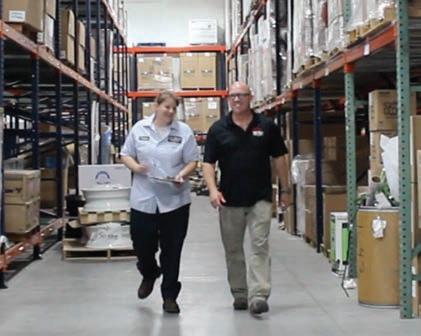
WAYNE TRAVERSE CITY TRUCK SALES | EXPERT SERVICE | PARTS
ATA President Testifies Before House Transportation Committee


ATA President and CEO Chris Spear testified before the House Transportation & Infrastructure Committee at a hearing titled, “The State of Transportation Infrastructure and Supply Chain Challenges.”
Spear highlighted the need to fully implement the 2021 bipartisan infrastructure law, the importance of reducing congestion and addressing concerns at supply chain bottlenecks including ports, the need to recruit and train the next generation of truck drivers, and the regulatory challenges that trucking is facing from overly ambitious and unachievable environmental goals.
While Congress will struggle to legislate this year due to divided partisan control of the House and Senate, the hearing laid down an important marker that supply chains will remain an important subject for Members over the next two years. ATA will work with these Member offices to advance key legislative priorities including the Truck Parking Safety Improvement Act, repeal of the federal excise tax on heavyduty vehicles, and reforming credentialing programs at DOT and TSA.
Congestion
Spear talked about the $1.2 trillion 2021 Infrastructure Investment and Jobs Act (IIJA), also known as the Bipartisan Infrastructure Law (BIL), noting that even though the trucking industry makes up just 4% of vehicles on the nation’s roads, it “pays nearly half the tab into the Highway Trust Fund.” He urged the committee to make sure “every dollar be spent wisely.”
Truck parking
Spear also mentioned truck parking in his opening remarks, noting that trucking needs “new, secure truck parking capacity as proposed by bipartisan Truck Parking Safety Improvement Act.”
“Getting [truck drivers] safe, secure, well-lit parking is a no-brainer,” he said.
Driver shortage
Last summer, the Federal Motor Carrier Safety Administration opened the Safe Driver Apprenticeship Pilot Program to begin the process of getting those young drivers into trucking, but Spear said the agency went too far, in part, by requiring driver-facing cameras.

“What the IIJA didn’t do is require inward-facing cameras, opposed by drivers young and old, union and non-union. Requiring a company camera be in a driver’s workspace every minute of every hour, including the sleeper berth, is intrusive, disrespectful, it opens a prying door into the other transportation modes. Your oversight is warranted.”
Spear added that the inclusion of the driver-facing camera provision will “Limit companies from joining this program and putting young talent in a capacity where they can replace our aging workforce.”
AB 5
Rep. Scott Perry (R-Pennsylvania) asked Spear about California’s AB 5 independent contractor classification law and the impacts it is having on trucking in the state.
“Giving people the right to choose” the path they want to take in trucking “is what is in question here,” Spear said. “Stop talking to the media and start talking to independent contractors. They’ll tell you why they chose this path. Whatever the reason may be, that’s their decision, their choice.”
He added that in most cases, drivers aren’t forced into being independent contractors by an employer looking to avoid paying benefits or other scenarios. “I’m not saying there isn’t abuse, but to reform entire state law or national law based on an anecdote ... just talk to the ICs. They’ll tell you this is a wonderful profession, a business they want to grow. They want to add trucks and drivers underneath them serving other companies. Give them that option, don’t take it away.”
With respect to the driver shortage, he told the committee that putting up barriers to independent contractor relationships will only make that problem worse and will drive up the costs of everyday goods even more.
Electrification
Another topic Spear focused on was the nation’s push toward electric, or zero-emission, vehicles. He noted there needs to be “realistic discussion” about energy and environmental policies in the U.S., adding that it’s “not a matter of if we get to zero, but when. And we will get there, just not on the timelines being proposed in California.”
He added that the state’s “rush to zero makes their timeline and targets unachievable, and they will fail.”
Spear cited a recent American Transportation Research Institute report that found that, despite only accounting for 4% of vehicles on the road, trucking would consume 40% of all power currently generated to charge the full fleet of trucks in the U.S.
ISSUE 1, 2023 15 ATA UPDATE
CHRIS SPEAR ATA PRESIDENT & CEO
Charging Infrastructure Challenges for the U.S. Electric Vehicle Fleet
Charging Infrastructure Challenges for the U.S. Electric Vehicle Fleet
Charging Infrastructure Challenges for the U.S. Electric Vehicle Fleet
New research from the American Transportation Research Institute (ATRI) provides an assessment of the infrastructure needs for electrification of the U.S. vehicle fleet, with an emphasis on the trucking industry. This analysis focuses on three infrastructure components that may prove challenging for electrifying the nation’s vehicle fleet:
New research from the American Transportation Research Institute (ATRI) provides an assessment of the infrastructure needs for electrification of the U.S. vehicle fleet, with an emphasis on the trucking industry. This analysis focuses on three infrastructure components that may prove challenging for electrifying the nation’s vehicle fleet:
New research from the American Transportation Research Institute (ATRI) provides an assessment of the infrastructure needs for electrification of the U.S. vehicle fleet, with an emphasis on the trucking industry. This analysis focuses on three infrastructure components that may prove challenging for electrifying the nation’s vehicle fleet:
1 U.S. Electricity Supply and Demand
1 U.S. Electricity Supply and Demand
2 Electric Vehicle Production
1 U.S. Electricity Supply and Demand
2 Electric Vehicle Production
3 Truck Charging Requirements
2 Electric Vehicle Production
3 Truck Charging Requirements
3 Truck Charging Requirements
ATRI’s research identified key findings in each of these three infrastructure components.
ELECTRICITY NEEDS ARE SIGNIFICANT
ELECTRICITY NEEDS ARE SIGNIFICANT
Full electrification of the U.S. vehicle fleet would require a large percentage of the country’s existing electricity generation including:
Full electrification of the U.S. vehicle fleet would require a large percentage of the country’s existing electricity generation including:
ATRI’s research identified key findings in each of these three infrastructure components.
ELECTRICITY NEEDS ARE SIGNIFICANT
ELECTRICITY NEEDS ARE SIGNIFICANT
• 26.3 percent for passenger cars and trucks
• 26.3 percent for passenger cars and trucks
• 14 percent for all freight trucks, including 10.6 percent for long-haul trucks
require a large percentage of the country’s existing electricity generation including:
Full electrification of the U.S. vehicle fleet would require a large percentage of the country’s existing electricity generation including:
• 14 percent for all freight trucks, including 10.6 percent for long-haul trucks
• 26.3 percent for passenger cars and trucks
• 40.3 percent for all vehicles
• 26.3 percent for passenger cars and trucks
• 40.3 percent for all vehicles
• 14 percent for all freight trucks, including 10.6 percent for long-haul trucks
Some states would need more than 50 percent of current electricity generation to meet vehicle travel needs (see map at right).
• 14 percent for all freight trucks, including 10.6 percent for long-haul trucks
• 40.3 percent for all vehicles
Some states would need more than 50 percent of current electricity generation to meet vehicle travel needs (see map at right).
Large-scale infrastructure investment would be a necessary precursor to electrification.
Large-scale infrastructure investment would be a necessary precursor to electrification.
• 40.3 percent for all vehicles
Some states would need more than 50 percent of current electricity generation to meet vehicle travel needs (see map at right).
Some states would need more than 50 percent of current electricity generation to meet vehicle travel needs (see map at right).
Large-scale infrastructure investment would be a necessary
Large-scale infrastructure investment would be a necessary precursor to electrification.
IOWA TRUCKING LIFELINER 16
WA 31.8% OR 36.2% MT 46.3% WY 42.6% NV 35.9% UT 62.9% CA 57.2% AZ 40.2% NM 52.1% CO 41.9% ID 38.8% AK 42.5% HI 42.2% TX 32.0% OK 38.7% KS 42.7% NE 39.0% SD 45.6% ND 30.1% MN 42.5% IA 35.9% MO 54.6% LA 28.3% AR 46.9% MS 43.2% AL 40.9% FL 38.7% GA 44.8% SC 30.8% TN 43.6% NC 38.5% WI 45.8% MI 42.3% IL 37.8% IN 42.8% OH 37.1% KY 33.8% WV 29.7% VA 31.6% PA 31.6% NY 34.3% ME 60.2% NH 50.1% • VT 55.8% • • MA 47.5% • RI 39.4% • CT 44.7% • NJ 40.9% • DE 38.1% • MD 38.9% • DC 11.1%
NEW REPORT! CHALLENGE #1 U.S. Electricity Supply and Demand CHALLENGE #2 Electric Vehicle Production CHALLENGE #3 Truck Charging Requirements Electricity Production Power Grid User Demand Mining Parking Charging Costs Raw Materials Environment/ Social Issues Country of Origin Percent of Total Generation Required: 0.0%–11.1% 11.2%–36.2% 36.3%–42.8% 42.9%–50.0% 50.1%–62.9%
WA 31.8% OR 36.2% MT 46.3% WY 42.6% NV 35.9% UT 62.9% CA 57.2% AZ 40.2% NM 52.1% CO 41.9% ID 38.8% AK 42.5% HI 42.2% TX 32.0% OK 38.7% KS 42.7% NE 39.0% SD 45.6% ND 30.1% MN 42.5% IA 35.9% MO 54.6% LA 28.3% AR 46.9% MS 43.2% AL 40.9% FL 38.7% GA 44.8% SC 30.8% TN 43.6% NC 38.5% WI 45.8% MI 42.3% IL 37.8% IN 42.8% OH 37.1% KY 33.8% WV 29.7% VA 31.6% PA 31.6% NY 34.3% ME 60.2% NH 50.1% • VT 55.8% • • MA 47.5% • RI 39.4% • CT 44.7% • NJ 40.9% • DE 38.1% • MD 38.9% • DC 11.1%
NEW
CHALLENGE #1 U.S. Electricity Supply and Demand CHALLENGE #2 Electric Vehicle Production CHALLENGE #3 Truck Charging Requirements Electricity Production Power Grid User Demand Mining Parking Charging Costs Raw Materials Environment/ Social Issues Country of Origin Percent of Total Generation Required: 0.0%–11.1% 11.2%–36.2% 36.3%–42.8% 42.9%–50.0% 50.1%–62.9%
REPORT!
ATRI’s research identified key findings in each of these three infrastructure components.
WA 31.8% OR 36.2% MT 46.3% WY 42.6% NV 35.9% UT 62.9% CA 57.2% AZ 40.2% NM 52.1% CO 41.9% ID 38.8% AK 42.5% HI 42.2% TX 32.0% OK 38.7% KS 42.7% NE 39.0% SD 45.6% ND 30.1% MN 42.5% IA 35.9% MO 54.6% LA 28.3% AR 46.9% MS 43.2% AL 40.9% FL 38.7% GA 44.8% SC 30.8% TN 43.6% NC 38.5% WI 45.8% MI 42.3% IL 37.8% IN 42.8% OH 37.1% KY 33.8% WV 29.7% VA 31.6% PA 31.6% NY 34.3% ME 60.2% NH 50.1% • VT 55.8% • • MA 47.5% • RI 39.4% • CT 44.7% • NJ 40.9% • DE 38.1% • MD 38.9% • DC 11.1%
NEW REPORT! CHALLENGE #1 U.S. Electricity Supply and Demand CHALLENGE #2 Electric Vehicle Production CHALLENGE #3 Truck Charging Requirements Electricity Production Power Grid User Demand Mining Parking Charging Costs Raw Materials Environment/ Social Issues Country of Origin Percent of Total Generation Required: 0.0%–11.1% 11.2%–36.2% 36.3%–42.8% 42.9%–50.0% 50.1%–62.9%
ATRI UPDATE
WA 31.8% OR 36.2% MT 46.3% WY 42.6% NV 35.9% UT 62.9% CA 57.2% AZ 40.2% NM 52.1% CO 41.9% ID 38.8% AK 42.5% HI 42.2% TX 32.0% OK 38.7% KS 42.7% NE 39.0% SD 45.6% ND 30.1% MN 42.5% IA 35.9% MO 54.6% LA 28.3% AR 46.9% MS 43.2% AL 40.9% FL 38.7% GA 44.8% SC 30.8% TN 43.6% NC 38.5% WI 45.8% MI 42.3% IL 37.8% IN 42.8% OH 37.1% KY 33.8% WV 29.7% VA 31.6% PA 31.6% NY 34.3% ME 60.2% NH 50.1% • VT 55.8% • • MA 47.5% • RI 39.4% • CT 44.7% • NJ 40.9% • DE 38.1% • MD 38.9% • DC 11.1%
Percent of Total Generation Required: 0.0%–11.1% 11.2%–36.2% 36.3%–42.8% 42.9%–50.0% 50.1%–62.9%
Key Findings
BATTERY MATERIALS DOMINATE BATTERY ELECTRIC VEHICLE (BEV) VIABILITY
Tens of millions of tons of cobalt, graphite, lithium and nickel will be needed to replace the existing U.S. vehicle fleet, placing high demand on raw materials.
Depending on the material, this represents:
• 6.3 to 34.9 years of current global production.
• 8.4 to 64.4 percent of global reserves.
BEV production has considerable environmental and social impacts:
• Mining and processing produce considerable CO2 and pollution issues.
• In some operations, a minimum of one million gallons of water must be utilized to produce a single pound of lithium.
• Exploitation of labor is common in some source countries.
BEV TRUCK CONUNDRUM
Battery weight increases price and vehicle range, but decreases cargo revenue weight.
Ultimately more BEV trucks will be needed on already congested roadways to haul the same amount of freight.
TRUCK CHARGING AVAILABILITY WILL BE THE TRUCK PARKING CRISIS 2.0

Using today’s truck and charging requirements, more chargers will be needed than there are parking spaces. Regardless of advances in battery capacity or charge rates, BEV charging will be limited by federal Hours-of-Service rules for drivers and parking availability.
Initial equipment and installation costs at the nation’s truck parking locations will top $35 billion, based on average per-unit purchase and installation costs of $112,000.
Additionally, to understand the truck parking challenges, ATRI quantified the truck charging needs at a single rural rest area, which would require enough daily electricity to power more than 5,000 U.S. households.

Other barriers include laws preventing commercial charging at public rest areas and the remoteness of many truck parking locations.
In the near term there are discrete applications for BEV trucks. Local and regional truck operations that rely on shorter trips and return the truck to terminals for nightly charging are feasible today. In the absence of public policies that mandate the purchase of these BEVs, carriers themselves will have to decide if the costs and benefits of a BEV truck fit well with their business models. And those decisions will be conditioned on truck costs, shipper/freight requirements, and access to abundant and inexpensive electricity. Issues arise however if any one or more of these decision-making inputs is not viable.
Producing BEV trucks that meet carriers’ operational requirements, including impacts on operations and balance sheets and providing ample charging, must be addressed by the entire supply chain. Utilities must ensure that expanded electrification is feasible as well. It is inappropriate, however, to place these burdens squarely on motor carriers.
For a copy of the full report, please visit ATRI’s website at TruckingResearch.org
ISSUE 1, 2023 17
Continued
$ VEHICLE COST $$$ VEHICLE COST BATTERY WEIGHT HEAVY BATTERY WEIGHT LIGHT Decreasing Cargo Revenue Weight (lbs.) Increasing Range (Miles)
The Best Managers Are Leaders — and Vice Versa
The difference between leaders and managers has long been debated. Classicists like Plato pondered about the various qualities of leaders and Niccolò Machiavelli wrote about how leaders and managers are different. Over his long career, organization guru Warren Bennis famously offered these observations:
Themanagerhashiseyeonthebottomline;theleaderhas hiseyeonthehorizon.
The manager asks how and when; the leader asks what andwhy.
Themanagerhasashort-rangeview;theleaderhasalongrangeperspective.
This all suggests that leaders and managers are different people. That view is misguided. Instead, we should want everyone — executives and employees — to lead when the time is right and manage when the time is right. Often, one set of challenges requires us to display strong leadership skills to provide teams with direction, whereas another requires us to buckle down and focus on execution. Rather than companies hiring people to handle the big picture while others sweat the details, individuals need to balance both skillsets, thinking of them as verbs (lead and manage), not as nouns (leaders and managers). Achieving this balance is the most important thing an organization can do. Otherwise, “leaders” at the top of an organization set its direction with no sense of the operational details, and

“managers” in the middle execute without inspiring, strategizing, or, when appropriate, pushing back.
To explore this idea further, over the last 15 years, I queried over 1,000 C-suite executives from 17 countries with a simple analogy, asking them to fill in the blanks: “Leadership is to ____ as management is to ____.”
Among the thousands of analogies produced, here is a small but typical sample organized into three categories. It illustrates the assumptions we often make about how one function interacts with the other:
Philosophy: subjective/objective; emotion/reason; soft/ hard; values/facts; romantic/rational; poetry/prose; curvilinear/linear; romanticism/enlightenment; art/science; qualitative/quantitative; picture/colors.
Action: strategy/operations; change/stability; interpretation/analysis; purpose/plan; tomorrow/today; continuous/discreet; compose/conduct; initiate/momentum; spark/oxygen; patent/production; compass/GPS; architecture/contracting; landscaping/gardening; coaching/training.
Relationships: inspiration/motivation; disciples/employees; passion/pay; release/oversee; transform/perform; person/place; individual/situation; one/many; mentor/employee; lead/follow; sprint/ pace; love/like.
It’s tempting to embrace these dichotomies and to adjust roles accordingly: Leaders are at the top of the org chart, and managers are in the middle. While I have no problem with the distinction between leadership and management that runs through the analogies, the problem comes from separating the two skills and styles into separate roles. CEOs need to manage, not just lead. Middle “managers” need the skills of leadership, too.
Bennis once said: Leaders “do the right thing;” managers “do the thing right.” The problem with the leader/manager distinction is right there in that quote: It is fine to make the distinction, but don’t pretend they are two different jobs. Doing the right thing is no good if you do it poorly, just as doing the thing right is no good if you do the wrong thing. Successful executives lead and manage — they don’t delegate one or the other.
IOWA TRUCKING LIFELINER 18 HUMAN RESOURCES INSIGHT
James R. Bailey
HUMAN RESOURCES INSIGHT
To help executives shift from a leader/manager mindset to a lead/ manage one and balance the two skillsets, here are a few suggestions:
• Use every possible internal communication channel to express the idea of balance between these two skillsets, including in mission and vision statements, company publications, firm-wide emails, public statements, and casual conversation. Use simple but effective language to describe how leadership and management overlap and the importance of balancing both. Express how leading and managing are equally honorable, how there are times for each, and that everyone should closely identify with both.
• Create regular dialogue about the issue with C-suite executives and other officers. Close the fissures in skillsets through focused coaching, training, and other kinds of support. Executives often believe their job is exclusively to lead. They need to understand that managing a process may require surrendering leadership, allowing their reports to take the reins. That’s how employees are developed. It is not a sign of weakness to hand over control — it is an act of leading by trusting.
• Make it part of the conversation at meetings and during performance appraisals. Ask for examples of when your team members led, and when they managed. Make these moments matter, emphasizing that the balance between leadership and management is fragile and requires constant vigilance at every level of the organization.

• Offer cautionary professional stories that illustrate when either leadership or management was privileged above the other, and the consequences. Similarly, tell triumphant stories about success when the two were harmonized.
• Promote the idea to shareholders and clients, pressing an opportunity to think creatively about the leadership-management equation and its value inside and outside the organization. Shareholders from Wall Street to Main Street need to understand that the organization
is innovating through leadership but doing it thoughtfully through management.
• Explain the functional distinction of leadership and management to the board, describing the critical elements and noting the need for watchfulness to win its support. The board’s backing is crucial to making this part of the culture.
Southwest Airlines’ late CEO James Parker — who assumed the big shoes of founder Herb Kelleher in the wake of 9/11 — is a good example. Here’s how he responded to a question about what leadership is:
Defining and communicating the mission; providing guidance as to how it might be accomplished; equipping people with the proper tools (information, training, etc.); motivating and inspiring through selfless dedication and respect for others; providing both positive and negative feedback, including recognition for achievement; and, ultimately, getting out of the way and giving people the ability and authority to accomplish the mission, with the full confidence they will be supported.
That’s a great description that includes both the high-minded values of leadership (inspiration, mission) and the nitty gritty of management (feedback, delegation, training). Successful CEOs strike this balance, and their firms and employees are better off because of it. The unattributed phrase that organizations are “over-managed and under-led” is true enough. But the answer isn’t for some people to ascend above the details to the hallowed role of leader. It takes both leading and managing, charging and charged, to strike the balance.
James R. Bailey is professor and Hochberg Fellow of Leadership at George Washington University. The author of five books and more than 50 academic papers, he is a frequent contributor to the Harvard Business Review, The Hill, Fortune, Forbes, and Fast Company.
c.2022 Harvard Business Review. Distributed by The New York Times Licensing Group.
ASSOCIATE $5,000 BMO Transportation Finance Craftsmen Trailer, LLC GATR Truck Center Housby Lube-Tech Mid-States Utility Trailer Sales, Inc. Motive Ottsen Oil Company Tenstreet Thermo King Sales & Service Trimble Truckers Insurance Associates, Inc. US Cargo Control Wilson Trailer Company Bauer Built Tire & Service Eastern Iowa Tire, Inc. Federated Insurance FirstLine Funding Group Hanifen Towing Katz, Sapper & Miller Majestic Truck Services Saige Partners LLC Thermo King Christensen USI Insurance Group COLLEAGUE $2,500 CORNERSTONE SPONSORS As of March 1, 2023 Want to see your company listed as an IMTA Cornerstone Sponsor? Contact the IMTA at 515-244-5193 or visit www.iowamotortruck.com PATRON SIGNATURE $8,000 $10,000 Cottingham & Butler GTG Peterbilt, Inc. Interstate PowerSystems MHCS P.C. PrePass Safety Alliance Trivista Companies, Inc. / Quality Services Corp. TEC Equipment PLATINUM $25,000 Alliance Interstate Risk MHC Kenworth Midwest Peterbilt Group Midwest Wheel Companies Thompson Truck & Trailer Truck Center Companies Truck Country TrueNorth Companies Thank You TO OUR 2023 CORNERSTONE SPONSORS
Self-Care: The Importance of Adequate Hydration
by Jason Peterson, MSEd, RDN, LD
Just as most of our planet is made up of water, 60% of our human body weight consists of water. Fluid in our bodies is essential for many functions including transporting nutrients and waste products and helping to regulate body temperature. Unfortunately, an estimated 75% of Americans move through each day mildly dehydrated. Dehydration is defined as a 1% loss of body mass due to fluid loss; it occurs when you lose more fluids than your body takes in. Dehydration may cause symptoms such as headache, weakness, dizziness, and fatigue. Over time, routine dehydration can lead to chronic health conditions.
You can boost your overall wellness and self-care with hydration. It is recommended an average adult consume at least 64-67 oz. of fluid each day. At least half that amount should be plain water and the other half from a non-calorie source such as plain decaffeinated coffee or tea, sugar-free decaffeinated drink mixes such as Crystal Light®, or other similar choices. Eat your calories – don’t drink them! Avoid sugary beverages such as soda, energy drinks, or other beverages containing high fructose corn syrup. Consider avoiding caffeinated beverages, especially if you have an irregular heartbeat, high blood pressure, anxiety disorder, or similar health conditions.
What is your level of physical activity? Dehydration can occur in any situation of physical activity, even if you’re not actively sweating. Those who live a more active lifestyle will have increased hydration needs. Even a modest level of dehydration, 2%, can decrease physical performance. It is recommended to begin periods of exercise well hydrated and replace fluid loss immediately afterward.
Hydration also plays an important role in mental health. Dehydration has been linked to negative mood rating, impaired motor performance, anxiety, fatigue, and even some short-term memory loss to name a few.
Listen to your thirst! When you feel thirsty, it’s a good indicator that your body is calling for hydration. However, once you sense your own thirst, you are likely already a bit dehydrated. Try to hydrate even when you’re
64-67 oz. RECOMMENDED AN AVERAGE ADULT CONSUME AT LEAST OF FLUID EACH DAY
not thirsty! The climate you live or work in also plays a factor - higher temperatures and higher altitudes require increased hydration.
Ready to increase your hydration? Here are some great tips to get started:

• Start your day with water. This will help you develop a thirst and taste for water throughout the day. You’ll also have more time in the day to meet your hydration goals!
• Keep water in your visual sight throughout the day, just like you might with your phone.
• Set hydration reminders on your phone, watch, or other reminder device.
• Find a reusable water bottle that fits your drinking and water temperature preferences. Check out the smart water bottles that light up if you have not taken a sip in a certain interval of time.
• On the road? Bring a jug of water to continue refiling and rehydrating.
• Add a flavor enhancer into your water such as fresh lemon or lime juice, cucumber slices, or sugar free flavor-enhancing drops.
Take care of your physical and mental health with good hydration. This simple focus in your daily routine will aid in your overall wellness. Get started today!
Jason Peterson is a Licensed, Registered Dietitian Nutritionist with an MS in Adult Learning & Leadership Development. He currently works at MercyOne in West Des Moines. He has coached patients of all ages in nutrition plans for improved health outcomes. He is passionate about all things food & nutrition!

HEALTH & WELLNESS
JASON PETERSON
What Lies Ahead with Changes to CSA
Compliance, Safety, Accountability (CSA) has been around since 2010 and while the idea of CSA may sound like old news, the talk of significant changes to the Safety Management System (SMS) is just beginning.
In mid-February, the FMCSA published a notice with a request for comments on the Federal Register. FMCSA’s notice is filled with proposed changes to the SMS, announced the ability to preview how the changes would look to a specific motor carrier number, and finally, requests comments and input to the proposed changes.
Previously, the SMS focused on seven Behavior Analysis and Safety Improvement Categories (BASICs). The FMCSA has proposed reorganizing the BASICs and naming them “safety categories.” Image 1.1 shows the old vs. new safety categories.

improve and assist enforcement officials in conducting targeted investigations. Vehicle Maintenance: Driver Observed would focus on violations that may be identified by a driver during a pre or post trip inspection and/or while operating a vehicle. The secondary safety category, Vehicle Maintenance, would include all other vehicle maintenance violations.
Another proposed change puts all violations for operating while under an OOS Order and places it in Unsafe Driving. Today, the SMS places operating while under an OOS Order across different categories based on the root cause of the violation (i.e. operating out of service after an hours of service violation would go to the Hours of Service Compliance BASIC, and operating out of service after an equipment violation would go to the Vehicle Maintenance BASIC).
Allison has spent the last 13+ years in various management & safety roles within the trucking industry, including her current role as Director of Safety & Member Services for the IMTA. Not only does Allison have tremendous expertise in safety and compliance, she also has a very positive working relationship with our regulatory and enforcement partners.

The two most significant changes to the newly named safety categories, is the removal of Controlled Substances/Alcohol and the addition of Vehicle Maintenance: Driver Observed. Controlled Substances/Alcohol has the fewest violations of any of the current BASICs in the industry and is cited relatively infrequently. Through FMCSA’s Exploratory Factor Analysis (EFA), they have identified that controlled substances and alcohol violations are strongly associated with the Unsafe Driving BASIC. Moving forward, any Controlled Substance/Alcohol violations would be moved into the Unsafe Driving safety category.
FMCSA also indicated the EFA results showed that breaking Vehicle Maintenance into two separate categories would help carriers
The Federal Register also discusses the sheer number of violation types. Over the last decade, violation codes used in the SMS system has grown from approximately 650 violations to 959 violations, often times making it hard to establish specific safety issues within a fleet. The Federal Register breaks down and consolidates violations for each safety category, reducing the violation codes considerably, as shown in Image 1.2.
The Federal Register continues on to discuss changes in the SMS as it relates to severity weights, percentiles and intervention thresholds. While the changes to the calculations are all important to monitor, the most immediate need is for motor carriers to be in tune with their SMS scores as they
IOWA TRUCKING LIFELINER 22 SAFETY UPDATE
Old New Unsafe Driving Unsafe Driving Crash Indicator Crash Indicator Hours of Service Compliance Hours of Service Compliance Vehicle Maintenance Vehicle Maintenance Controlled Substances/Alcohol Vehicle Maintenance: Driver Observed Hazardous Materials Compliance Hazardous Materials Compliance Driver Fitness Driver Fitness Image 1.1 BASICs vs.
Proposed Safety Categories
ALLISON MEINERS Director of Safety & Member Services, Iowa Motor Truck Association
stand today. At this point, we don’t have a firm timeline on when these changes may be implemented, but FMCSA has been very clear they want changes to the SMS program. Motor carriers have the opportunity to preview their scores in the new scoring system through the CSA website or FMCSA portal. Once scores are reviewed, make a plan for action. In a reactive manner, motor carriers can review their violations and submit DataQs when appropriate to improve scores. Driving the scores down where possible will be beneficial to keep compliance in check as changes come. In a proactive manner, motor carriers should coach the importance of compliance in each of the safety categories. Additionally, make and implement a plan to continually monitor SMS scores. These scores are a large indicator for motor carrier prioritization as it relates to auditing.



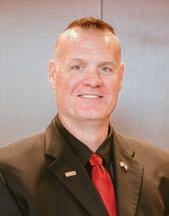

Image 1.2 Violation Consolidation

Violations in Category Number of Violation Provisions/Codes in SMS Number of Consolidated Groups in New System Unsafe Driving 59* 32 Hours of Service Compliance 73 9 Vehicle Maintenance 406 15 Vehicle Maintenance: Driver Observed N/A 35 Controlled Substance/Alcohol 11 N/A Hazardous Materials Compliance 369 14 Driver Fitness 55 11 Total 973 116
*Number includes 14 additional violations for operating while under an OOS Order that are not used in the current SMS methodology.
SAFETY UPDATE
If motor carriers would like to learn more about SMS compliance or any additional value-added services IMTA offers such as mock audits, please contact Director of Safety & Member Services, Allison Meiners at allison@iowamotortruck.com.
2023 Iowa Council of Safety Management (ICSM) Steering Committee
JOHN HOLT Ruan Transportation Des Moines, Iowa
KEITH LAMFERS Casey’s General Stores Ankeny, Iowa
TERRY PUMP CRST the Transportation Solution Cedar Rapids, Iowa
DAVE ZERBE Keane Thummel Trucking New Market, Iowa
JUSTIN WALTERS Tenstreet Cedar Rapids, Iowa
Our agents work with you. We selectively choose agents with a keen focus on the trucking industry. Our agents are knowledgeable, dependable, and responsive. They understand your needs and work with you to match the right coverage and level of service for your trucking operation.

Do one thing, and do it right. Our agents can guide you through the process and customize a plan to provide you the broadest protection possible. You can be confident knowing that our service begins, not ends, with the issuance of your policy.
Great West Casualty Company – No matter where the road takes you, you will discover that at Great West, The Difference is Service ®
24 Knowledge is Power
Not All Trucking Companies Are Alike
West Casualty
800.228.8602 gwccnet.com
Trucking is all we do. When you choose Great
Company to insure your trucking business, you are getting over 60 years of experience serving the trucking industry.






Renewable fuels drive change and power possibility. Renewable Energy Group, REG, the logo and the other trademarks and trade names referenced herein are trademarks of Chevron U.S.A. Inc. © 2023 Chevron U.S.A. All Rights Reserved. Lower carbon fuel solutions for your fleet — starting today. A complete line of high-quality biofuels, Chevron Renewable Energy Group’s EnDura Fuels™ is a simple way to move your fleet forward by enabling reduced carbon intensity, improving engine performance, and maintaining profitability — now. Visit regi.com for lower carbon fleet solutions. BIODIESEL RENEWABLE DIESEL RENEWABLE DIESEL + BIODIESEL ULTRA BIODIESEL regi.com
Never Repeats Itself, but it Does Often Rhyme”
There is not a single person working in our industry who doesn’t know, “Trucking is a cyclical business.” There are periods when it is very prosperous, and there are periods when it is tough to merely survive. As multiple cycles of experience pile up over the years of anyone’s career, it becomes increasingly easier to see the patterns which repeat themselves, cycle after cycle. It also often becomes ever more tempting to only see the similarities of the cycles as they come and go, and not take the time to figure out what is different in the current cycle than previous cycles. When industry veterans get blindsided late in their career, this is often the reason. And, “I should have seen that coming” is often their refrain.
WHAT STAYS THE SAME?
How marketplaces work, and how market participants behave, does not change. They are a reflection of us, the human animal. We are full of greed and full of fear, and markets soar and then crash, as a result. Yes, more than 80% of the cycle is the same. But, not all of it is the same. Understanding what is different separates people into two groups: those who beat the cycle, and those who get beaten by the cycle.
WHAT HAS CHANGED?
The Speed and Efficiency of Markets
Never before have markets reacted and adjusted as quickly as they do today. As more sophisticated technology is used by buyers and sellers of all sizes, significant increases in information about supply and demand have become available to everyone. Adjustments such as increases/decreases in price that used to take weeks or months, now happen daily or even hourly. Just as this is true for those of us in the trucking industry, it is also true for the producers of the products that need to be shipped. The net result is that at times markets seem more volatile because the speed at which the market can swing has never been faster.
As the use of technology and the capabilities of that technology continue to grow, so will the speed at which markets react. Those who continue to adopt new technologies and position themselves to quickly adapt to changing marketplace conditions will thrive; those who do not, will not survive.

The Demand for Each Mode. Over the coming decade, onshoring will drive incremental demand for all modes. Beyond that, the underlying reasons are different for each mode, but the rate at which demand will grow for each will significantly surpass previous periods. Those waiting for large cataclysmic contractions will get left behind. The thesis for each mode is as follows:
Dry Van - demand will continue to be driven by consumer spending and new household formation. While the rate of growth in consumer spending has slowed, it had to slow from the frenetic pace it reached, it will continue to grow in 2023 as consumer income continues to grow. As demand for labor continues to exceed the supply of workers, wages and consumer income will continue to grow. New household formation has also slowed. Similar to consumer spending, it had reached a frenetic pace (housing starts hit levels not seen since 2006, before the 2008 housing crash) that was impossible to maintain. Higher mortgage rates are putting pressure on new household formation right now, but inflation will trend lower throughout 2023 and as it does mortgage rates will decline and new household formation will reaccelerate.
Purchasing a new house is only the first step for a young couple. Almost a decade of spending follows the house purchase, as they make the house their home. Young couples don’t buy houses because mortgage rates are low; they buy them because they need a place for their growing family to live.
In the first year after buying a new home, consumers are >2 times more likely to buy a new car.
“History
– Mark Twain
ECONOMIC UPDATE IOWA TRUCKING LIFELINER 26
DONALD BROUGHTON Managing Partner, Broughton Capital LLC
Reefer - An entirely new driver of incremental demand has been created.
• The pandemic and quarantines forced an ever larger number of people to learn / start to cook, or expand the types of things they cooked and increase the frequency (number of meals per day, as well as the number of days per week) they cooked. The well-established trend toward healthier menus with less processed food or ingredients was accelerated as people found the time, made the changes, and discovered the food tasted better. Volumes of foodstuffs in what are known as ‘the perimeter of the grocery,’ have seen steady increases in demand since March ’20, while the center aisles of the grocery have seen demand fall or remain flat. Reefer tends to move the perimeter, while dry van tends to move the center of the grocery. We see no reason for this trend to reflex or reverse itself.
• As ‘on-demand’ restaurant delivery services proved themselves to be a viable alternative, several things happened. The delivery companies opportunistically and dramatically expanded their workforces; consumers expanded their view of food delivery beyond pizza and Chinese; and restaurants focused on delivery services provided by anyone (including customer pick-up) as a lifeline that would allow them to survive. While delivery services expanded to even include fast-food restaurants, which tend to use much more processed food, the vast preponderance of growth in this channel came from restaurants using fresh or frozen ingredients. For each meal shifted, from processed food or one using processed ingredients, to one using fresh or frozen ingredients, represents a market share of 5% (3 meals per day, 7 days a week = 21; 1 / 21 = 4.8%). We believe this shift will not only prove to be permanent, but expect it will continue to expand and gain share for reefers.
The 35% increase since Jan ’20 suggests our thesis outlined above might be valid. The historically high correlation with load volume and spot pricing in the reefer market suggests better times are coming for the sector.
Flatbed – demand will continue to be driven by the construction and automotive industries, with significant waves of additional demand being added by the oil & gas exploration, steel, manufacturing and agricultural industries.

The rally in WTI crude oil prices, to levels that materially
Donald Broughton
exceed the cost of production via fracking in all the major fields, has already driven rig count dramatically higher. Just as e-commerce and food delivery govern the addition of capacity in Dry Van and Reefer, Oil & Gas Exploration will offer alternative high paying employment to potential drivers for the Flatbed industry. Russia’s attempt to extort the Europeans into accepting its invasion of Ukraine by restricting their access to Russian oil and naturalgashasalreadybackfired. Within the next three years, the US will replace Russia as theproviderofoilandnatural gas to Europe.
The oil rig count, already 3.5X the Aug ‘20 Covid-low, could more than double again from current levels. Current European concerns will drive the natural gas rig count (which was already 2.2X the Aug ’20 Covidlow) ever higher.
It was already being driven higher by demand from the auto industry, the oil & gas exploration industry, and a boom in commercial construction. Then the Russians bombed Ukrainian mills (steel was their second-largest export, exceeded only by grain), sharply tightening global capacity.
Summary - the economy continues to rebound more vigorously than most people appreciate, and it will continue to grow faster for a longer period than anyone predicts. The drivers of demand in each segment are also offering employment alternatives to drivers, thwarting the ability of each mode to add capacity. The combination of sustainable demand and constrained capacity should extend the length of this period of prosperity for the entire trucking industry. Fasten your seat belts because it is going to be an incredible ride!
It is our long-held belief, backed up by years of experience and tons of data, that the most reliable and earliest indicator of economic conditions is the trucking industry. Long before the wizards of Wall Street, or those big brains with PHDs in economics, become aware of a trend, the men and women of the trucking industry know. Not only do you know whether the consumer economy or the industrial economy is getting better or getting worse, based on the volume of loads and the rates being paid, but you know about specific companies (i.e., Wal-Mart may be sticklers about appointment times but they get me unloaded quickly; K-Mart is very disorganized, take forever to unload me, I can’t understand how they stay in business). Our ongoing mission with this column will be to: highlight trends in other parts of the freight market that you might not be aware of, but could end up affecting you; as well as trying to explain what we believe are the reasons behind the trends you are experiencing in trucking.
After spending over two decades as one of Wall Street’s top Analysts and one of its leading Market Strategists, Donald Broughton founded Broughton Capital in 2017. Broughton is notorious as a hard-hitting forensic accountant, using Sell ratings more often than any other analyst. He is highly regarded for translating goods flow data into economic forecasts that have proven to be highly prophetic. Additionally, Broughton is convinced that most individuals know much more about the economy than they realize and believes that economists are only boring because they are lazy or choose to be.
ISSUE 1, 2023 27
IMTA Leadership Class Celebrates 30 Years of Personal and Professional Development


Since its inception in 1993, the IMTA Leadership Program has been one of IMTA’s longest running programs and continues to be a tremendous success on many different levels. There is a direct and significant correlation between the level of involvement and support for IMTA and its activities from the individuals and companies that are involved in this program.

Additionally, the program successfully and effectively instills pride and a level of commitment to be involved that no other program can emulate. Seeing the enthusiasm and the excitement of the leadership class participants to stay engaged and to stay involved is truly extraordinary and gives us all great hope and optimism for the future of IMTA. In fact, seven years ago, the graduates were so excited after completing the leadership class that they offered to spearhead an effort to focus on the continued support and activities for the developing leaders of the association.
As a result of their leadership and dedication to this concept, the LEAD IMTA Council was developed and suffice it to say, this group has done amazing things. In addition to monthly meetings, this group developed the LEAD IMTA Conference, which has been around for 8 years now. Additionally, Council members identified ways they could complement the efforts of the association. The Foundation silent auction and support of our Truck PAC are just a few of the ways this amazing group of volunteer leaders is making a tremendously positive contribution to IMTA’s efforts. And two years ago, we added two seats to our Board of Directors for LEAD IMTA Council members.
THE FIRST OFFICIAL IMTA LEADERSHIP CLASS FROM 1993

FRONT ROW, L TO R: Greg Christians (Solar Transport); Brian George (GTL); Mike Weinrich (Weinrich Truck Lines); Jim Jorgensen (Umthun Trucking Company); Jeff Dickinson (Merchants Distribution Service); Tim Annett (TMC Transportation)
MIDDLE ROW: Kathy Swank (DRS Transport); Doug Hartke (Raider Xpress/D&J Transfer); Jackie Johnsrud (Johnsrud Transport); Steve Schuster (Schuster Truck Line); Tom Schmidt (Gorden Sevig Trucking) BACK ROW: Dave Van Wyk (Van Wyk, Inc.); Todd Miller (Highway Carrier Corp.); Steve Umthun (Umthun Trucking Company); Brent Michaelsen (Michaelsen Trucking); Dave Dickey (Harold Dickey Transport); Jeff Elliott (Elliott Brothers, Inc.); Dave Steffens, Jr. (Norsemen Trucking)
“When discussions started over 30 years about developing a leadership program, I never imagined it would evolve into what we have today. This program is special and the greatest investment that we can make in the short- and long-term vitality of this association,” said IMTA President and CEO Brenda Neville, who has been involved with the program since its inception.
IOWA TRUCKING LIFELINER 28 NEXT GENERATION
2023 IMTA LEADERSHIP
CLASS
NEXT GENERATION
2023 IMTA LEADERSHIP CLASS
2023 LEAD IMTA COUNCIL










BLAKE
SARAH


JOE
KENDRA

LIZ
JEFF


JACOB
ADAM







ISSUE 1, 2023 29
ERICA BELLACH Thompson Truck & Trailer
COREY BRUCE JT Logistics
GROLMUS Ruan Transportation
HAMMOND Hirschbach Motor Lines, Inc.
DOMINIC JULICK Syngenta Seeds LLC
KARBERG Hirschbach Motor Lines, Inc.
KLOOSTER West Side Transport, Inc.
KRAUSE MHCS
RYAN LACONA Ruan Transportation
CONNOR LEWIS Truck Center Companies
MARTIN Green Products Co.
PIPKIN TrueNorth Companies
TIFFANY POPOVICI Bison Transport USA
SHOUSE US Cargo Control
HEIDI SMITH Stutsman Logistics, Inc.
JOE BISSEN Panama Transfer, Inc.
ISAAC CHILDS Thompson Truck & Trailer
MELANIE DAVIDSON JT Logistics
BRETT DUFFY TrueNorth Companies CHRIS DUN Tucker Freight Lines KALY ETTEN CRST The Transportation Solution, Inc.
ERIC GEMSKI Trivista Companies
NICK KANE Warren Transport, Inc.
HANNAH KOELE Heyl Truck Lines
KYLE MAKAR Capital City Fruit
JOE MCCONNELL Perishable Distributors of Iowa
BRAD MCCOY Truck Country
MACAULEY MOSHER Cummins Inc.
AMBER MULLINS Clausen Supply Co.
MANDI RICKELS Don Hummer Trucking
ABBY RYAN Crawford Trucking
BRYAN STEFAN Isaac Instruments BEN STEINES Ruan Transportation
BEN STRATHMAN Cottingham & Butler
LACEY THOMAS Bison Transport USA
STEPHANIE TRASK West Side Transport, Inc. FAITH WARDEN Decker Truck Line, Inc.















When the road gets rough, TCI Business Capital can help! Drive your cash flow with our custom invoice factoring programs. Month-to-month agreementsHigh advances, low rates Lines from $50K - $10MM Unmatched support, your client team answers the phone Same-day fundings www.tcicapital.com | (800) 707-4845 Contact us at 651-633-2820 or sales@tkstp.com www.thermokingdealer.com STAY EVERGREEN Keep it clean Precedent Evergreen TRU • Industry leading CARB Evergreen Solution for almost a decade. • 125,000 units produced since 2013 launch. • Superior temp control with a proven track record for reliability. • Mulitple models to suit any fleet. Save Fuel Superior Temp Control

Waterloo Cedar Rapids Davenport Quincy Wichita Great Bend Hays GTG Peterbilt Has Acquired Doonan Truck & Equipment Now serving seven GTG Peterbilt locations across the Midwest. Visit us at www.gtgpeterbilt.com. REFRESH YOUR AGING ENGINE WITH FROM CAT ® NEW IRON 844.944.1583 www.zieglercat.com/specials/trucks YOUR TRUCK IS AN INVESTMENT. BE CONFIDENT IT’S BUILT TO LAST. With the newest Cat On-Highway Truck engine offering, choose either an all-new long block or drop in a complete engine with a 100% new block, crankshaft, and cylinder head. Get the reliability you’ve come to count on from Cat and the trust that your engine can hit the road for another million miles. NOT CONVINCED YET? Combine your engine rebuild with eligible limited-time offers to increase the savings. Ask us about our ability to repower Cummins or Detroit engines too! Contact our designated On-Highway Truck Customer Service team to learn more about the benefits of the new Cat engine.
AWARD WINNER INSIGHT
2022 IMTA IMAGE AWARD WINNER Panama Transfer, Inc.
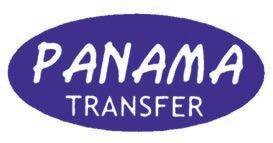
It is an everyday effort to showcase and highlight the value of trucking and remind people why we love and appreciate the industry so deeply. Because of the importance of these pro-trucking efforts, IMTA proudly recognizes an IMTA member for their outstanding commitment and efforts in helping the public gain appreciation for value of the trucking industry.

What are some things that IMTA members could do to raise awareness about the industry through public relations without spending a lot of money?
We feel that by educating people about the industry we allow them to better understand the issues our drivers face when moving their products across the nation. Anytime we can get this message out to the public, the more we can change the public perception of our industry. We feel every dollar we spend is well worth the investment.
What are some things that IMTA members could do to raise awareness about the industry through public relations without spending a lot of money?
As an industry we should all promote safety, and perhaps show a softer side to trucking. With the softer side of trucking, we feel employing women is a great step in the right direction to help our industry. One other thing we have found effective is the Share the Road program we have started at our company. We have also entered our equipment into parades and other community events. This puts a face to the truck driver they see and gives us a chance to change the perception of many individuals that the industry touches.
What is the most popular program that you do as part of your public relations efforts? Why is it so popular?
Panama Transfer is a family owed LTL company located in Panama, Iowa, that has been in business since 1957. The company was founded by Jim and Rita Kloewer with the help of Jim’s brother Don in 1957 shortly after Jim’s return from Korea. Jim was a driver in a transportation unit during the War. Jim and Don started with 2 trucks and moved freight at night with them backed up together. Don was killed in a car accident in 1963. Jim and Rita operated it until the company was purchased by Jim’s son Dean Kloewer and son-in-law Mark Crall in 1991. Today we have over 300 employees and service over 5 midwestern states. We still have the same great overnight service Jim and Don had over 60 years ago, but we have stopped backing trucks together to move the freight.
Hands down it is the IMTA show trailer and driving simulator. This is the most important tool we must use to showcase our profession to the public. We have received great reviews from individuals that have participated in it or have seen it. For us it has led to 3 individuals in our area trying to move into the industry to find a driving job.
If an IMTA member committed to one public relations effort - what would you suggest they do?
A campaign to change the image of drivers is the most effective campaign we should focus on. I think we can all agree the public image of a driver in that big rig is tilled in a negative light. We need to make it a more personal thing with the motorists and individuals we interact with daily.
Any other advice on implementing a public relations effort?

Make it a team effort with your employees. A great example of this was the State Fair this year. We ran the simulator for a whole day and had great participation from our employees from different terminals around the state. Fairgoers got to meet a real-life driver or an individual that works in our industry to see what we do.

IOWA TRUCKING
32
LIFELINER
AWARD WINNER INSIGHT


2022 IMTA SAFETY ADVOCATE OF THE YEAR Randy Kopecky, Don Hummer Trucking
Fulfilling any kind of role in safety in the trucking industry requires several important skills but two of the most important skills is a passion for professionalism and commitment to always making safety a top priority. Keeping everyone focused on the value of safety is not without challenges and having support from the very top always ensures a greater acceptance and respect of the role of safety. Fortunately, there are many trucking companies in Iowa that truly understand, respect, and support a safety centric culture. It is encouraging to see the commitment to safety that prevails among many of the IMTA members.
Why does your company invest the time, energy, and financial resources into a solid & effective safety department.
A good safety program is not a profit center but if it’s properly built and flowing to all levels of the organization it is an expense reduction and personnel development area. Those things when done properly will drive growth and profitability.
What are some things that IMTA members should be doing to enhance their safety efforts?
Make sure you have broken the silos down between your departments, when safety is doing something, it should always be presented as our company is doing this. If you ask an operations, shop, sales, etc. member about why we do this for safety you should get the same answer.
What is the most popular safety program you have implemented at Don Hummer Trucking? Why is it so effective?

Probably taking much of our onboarding out of a classroom setting to an on-line learning platform that the recruit can do on their own before coming to orientation. Orientation time is now spent with more hands-on time with the equipment and facetime with their actual manager. We have seen about a 50% reduction in the first 6 months incidents since the switch in late 2019.
What is the first step that should be taken to promote a safety culture at a trucking company.

Build and rebuild relationships with your other departments, you need to have support if you are going to change culture.
Any other advice on implementing an effective safety program at a trucking company?
My advice is similar to the question “how do you eat an elephant?” One bite at a time. Pick the right measures and start working to improve them.
ISSUE 1, 2023 33
AWARD WINNER INSIGHT


2022 IMTA MASTER TRUCK DRIVER OF THE YEAR Michael Fink, Warren Transport, Inc.

The professional truck driver is without question the foundation of this great industry. These true professionals not only deliver the products we all depend on, but they also deliver the peace of mind that only a true professional can deliver. We are all the beneficiaries of their professionalism, commitment, and compassion. Additionally, professional truck drivers exemplify what it means to be a selfless hero because they care more about what others need than what they themselves need.
How do you define professionalism and how do you “walk the walk” every day as a professional truck driver?
I take pride in delivering on time and always doing what I said I would do! Sticking to my word is what I thrive on each and every day while on the road. Also, treating the customer and shipper with respect. If I want respect I better show it, and vice versa.
What is one piece of advice you would give to a trucking company as they are recruiting new drivers?
To explain to the recruit that this is a CAREER choice not a 9-to-5 job. A career that will take you near or far and will bring you satisfaction if you’re doing the work to the best of your ability. A 9-to-5 job won’t take you across the country and take in the sites.
As an industry, we continue to deal with an escalating driver shortage. Do you believe that simply increasing driver pay is the solution or is there other things that should be done to attract people to our industry?
Money isn’t everything, especially if you love what you do. The relationship between a driver and a dispatcher is very important, and the driver’s family/personal affairs are crucial to the company. It’s a company culture that needs to shine.
What is your most valuable safety tip that you would give to a brand-new truck driver?
Stay away from aggressive driving! If you go a little slower than the traffic flow it will keep you out of trouble. Trouble that could be costly to not only you as the driver but the company you are representing. Can’t just think about yourself.
What is one driving tip you would like to give to every driver on the road that isn’t a truck driver?
My tips depend on the day and what I’ve experienced on the road that day, but if I must give just one I’d say that when entering traffic on an interstate or highway get up to the legal speed. Do not step on the brakes.
As a professional truck driver how do you think we can successfully combat distracted driving?
Stress the fact that a professional driver keeps his attention on the road and things surrounding him. Focus on your driving and be ready for anything.
As states continue to develop solutions to combat the ongoing issues with truck parking, what are some factors they should consider as they try to create additional parking?
Try to establish secured parking areas near industrial zones so a driver has somewhere to go before he delivers.

IOWA TRUCKING LIFELINER 34
AWARD WINNER INSIGHT


2022 IMTA PROFESSIONAL TRUCK DRIVER OF THE YEAR Jeffrey Cody, Weinrich Truck Line, Inc.


The professional truck driver is without question the foundation of this great industry. These true professionals not only deliver the products we all depend on, but they also deliver the peace of mind that only a true professional can deliver. We are all the beneficiaries of their professionalism, commitment, and compassion. Additionally, professional truck drivers exemplify what it means to be a selfless hero because they care more about what others need than what they themselves need.
How do you define professionalism and how do you “walk the walk” every day as a professional truck driver?
Being “professional” is showing responsibility for your driving and for your equipment, as well as watching out for and respecting others on the road. I have learned to expect the unexpected, people will drive foolishly, and you must be prepared, and be the professional, to save both them and you from their mistakes.
What is one piece of advice you would give to a trucking company as they are recruiting new drivers?
Be completely honest and upfront about everything, from expectations to rewards. Don’t give drivers the opportunity to say that they were misled.
As an industry, we continue to deal with an escalating driver shortage. Do you believe that simply increasing driver pay is the solution or is there other things that should be done to attract people to our industry?
Increasing pay is only a portion of the answer. It is hard to find anyone who wants to work anymore, and no one wants to live in a truck. In my opinion the days of weeks on end, on the road, are over. There must be a better balance of work life, versus home life, to attract new people to the industry.
What is your most valuable safety tip that you would give to a brand-new truck driver?
In the past I would always say, “you can come off of a hill too slow hundreds of times, but you will only come off too fast once”. However, today I would have to tell a new driver, “Never race your ELD! The few extra minutes you save are not worth the risk.”
What is one driving tip you would like to give to every driver on the road that isn’t a truck driver?
We have to share the road to deliver the goods everyone wants and needs, so we need to respect each other. Please be aware of our size and that we cannot maneuver or stop near as quickly as you do.
As a professional truck driver how do you think we can successfully combat distracted driving?
Get rid of cell phones. While I know that it’s not possible to get rid of cell phones and I hesitate to say anything should be required, motion locks on phones would be a good start.
As states continue to develop solutions to combat the ongoing issues with truck parking, what are some factors they should consider as they try to create additional parking?
Safe locations with adequate lighting and restroom facilities. They need to start thinking outside of the box. I have seen places where there are abandoned shopping malls that would be a good location to convert to truck parking. The truck stop model cannot be the only solution.
ISSUE 1, 2023 35


Iowa Trucking Delivered a Successful Day at the Iowa State Capitol







Iowa’s trucking industry showed up as a strong, unified voice when over 80 IMTA members participated in Trucking Day at the Capitol. In addition to the voices, a variety of trucks were staged around the Capitol Complex to provide a powerful display as legislators & staffers arrived for the day, and also for the motoring public driving through the area.
Driver Ambassadors were on-hand to serve breakfast, as well as to provide a personalized Valentine’s Day treat bag to all 150 legislators. Driver Ambassadors then accompanied legislators & staff members on truck rides throughout downtown and driving simulator opportunities.


Outside of the House & Senate chambers inside the Capitol, IMTA members focused on calling out legislators to have a conversation about the overall impact trucking has on the state of Iowa, including their specific district. Numerous conversations were had that shined the spotlight on trucking in a very positive manner; and every legislator could walk away from their conversations knowing not only how significant trucking is in Iowa, but that the pride for the industry is just as impactful.

IMTA UPDATE
SAVE THE DATE: 2023 Iowa Truck Driving Championships



It’s time to get excited and to get involved with the annual Iowa Truck Driving Championships. Whether it be by sending a driver to participate, being a volunteer, or providing financial assistance through a sponsorship, the 2023 TDC Committee wants to get you involved so you can witness firsthand the benefits of this event – not only for your drivers but for your company as a whole. Join us at Prairie Meadows on June 22 and 23 for an event that celebrates and recognizes the professional truck drivers that move Iowa forward each and every day.
IMPORTANT DATES
Driver Registration Opens: week of April 10
Driver Registration Deadline: week of May

TDC Committee

IOWA TRUCKING LIFELINER 38 IMTA
YOUR FULL-LINE SALES & SERVICE CENTER Conveniently located off I-80/Exit 143, Altoona, IA • Trailer sales new & used • Skilled workforce to service all makes & models • Authorized Warranty & Repair Center for: Strick - MerrittMorgan - Fontaine - Wabash - Wilson - Delta Waseca - LandollTranscraft - Benson • Fully stocked parts department with statewide delivery • Major Parts suppliers for: New Life - Aurora Parts - Merritt - WilsonMorgan - Shur-Co. • Full line of pickup & SUV accessories 7 a.m. to 12 a.m. Monday - Friday | 8 a.m. to 12 p.m. Saturday 316 Adventureland Dr., NE • Altoona IA 50009 Ph: 515.957.0300 Toll-free: 800.288.3032 IF YOU WANT IT DONE RIGHT YOU WANT IT DONE RIGHT HERE Visit us online at: ctsdesmoines.com
UPDATE
29
2023
FRONT ROW, L TO R: Bridget Nixon (Solar Transport); TDC Chairman John Holt (Ruan Transportation) BACK ROW: Justin Walters (Tenstreet); Krystin Sitzmann (TrueNorth Companies); Dave Zerbe (Keane Thummel Trucking); Brian Pyle (Pyle Transportation); Bob Myers (Hy-Vee, Inc.) NOT PICTURED: TDC Co-Chairman Keith Lamfers (Casey’s General Stores); Cody McClain (Tucker Freight Lines); Terry Pump (CRST the Transportation Solution)
Iowa Motor Truck Association — 2023 Schedule of Events

Happy Hour hosted by the LEAD Council
Wednesday, April 5

4:00 PM – 7:00 PM
Republic on Grand, Des Moines
Safety Professionals Conference
Wednesday, April 19 & Thursday, April 20
IMTA Office, Des Moines
Webinar: Post Hire Performance Management
Tuesday, April 25 10:00 AM - 11:00 AM
Maintenance Professionals Conference
Wednesday, May 10
IMTA Office, Des Moines
Seminar: DOT Roadside Inspection Training
Tuesday, May 16 9:00 AM - 12:00 PM
IMTA Office, Des Moines
Happy Hour hosted by the LEAD Council
Thursday, May 18
4:00 PM – 7:00 PM
Cedar Rapids
Webinar: Maximizing Your Ability to Influence
Wednesday, May 24 10:00 AM - 11:30 AM
Truck PAC Golf Outing

Thursday, May 25
Legacy Golf Club, Norwalk
IMTA Leadership Conference
Thursday, June 1 & Friday, June 2
IMTA Office, Des Moines
Truck Driving Championships
Thursday, June 22 & Friday, June 23
Prairie Meadows; Altoona
Webinar: On-Board Cameras
Thursday, June 29 10:00 AM - 11:00 AM
IMTA at the Iowa State Fair
Thursday, August 10 – Sunday, August 20
Webinar: Delegation & Prioritizations
Thursday, September 14 10:00 AM - 11:30 AM
IMTA Management Conference
Tuesday, September 19 & Wednesday, September 20
Downtown Hilton, Des Moines
A LIST OF EDUCATIONAL OPPORTUNITIES, AS WELL AS INFORMATION SPECIFIC TO EACH OF THE LISTED EVENTS, CAN BE FOUND AT IOWAMOTORTRUCK.COM

ISSUE 1, 2023 39
IMTA EVENTS
TRUCKING DRIVES THE ECONOMY

CAREERS
FINAL THOUGHT
In the Fight Against Human Trafficking, Why Truckers?
By Lyn Leeburg, TAT Co-Founder
109,520
Trucking industry jobs in Iowa 1 in 12 jobs in the state
SMALL BUSINESS EMPHASIS
24,620 Trucking companies located in Iowa
Primarily small, locally owned businesses, these companies are served by a wide range of supporting businesses.
COMPETITIVE WAGES
Total trucking industry wages paid in Iowa in 2021 exceeded $5.6 billion, with an average annual trucking industry salary of $51,160.
TRANSPORTING THE ESSENTIALS
of manufactured tonnage transported by trucks in Iowa. 219,290 tons per day
SAFETY MATTERS
SAFETY FIRST
Heavy and tractor-trailer truck drivers held 37,170 jobs in Iowa in 2021. The national average annual salary of an over-the-road truck driver is $69,387.
of communities in the state depend exclusively on trucks to move their goods.
Iowa Motor Truck Association members put safety first through:
Improved driver training
Investment in advanced safety technologies
Active participation in industry safety initiatives at the local, state and national levels
CONTINUALLY IMPROVING 2020 U.S. fatal crash rate per 100 million Vehicle Miles Traveled (VMT):
Between 1975 and 2020, the U.S. large truck fatal crash rate has dropped

67.9%
IMTA’S COMMITMENT TO CONTINUED OUTREACH & EDUCATION
IMTA’s show trailer equipped with a state-of-the art driving simulator is routinely on the road specifically reaching Iowa High School and Middle School students, but was also a highlight at the Iowa State Fair. The driving simulator has been very effective in showing the value of sharing the road with trucks and has had folks from the age of 18 up to 80 take advantage of this unique experience. If you are interested in hosting the show trailer, please contact the IMTA office (515) 244-5193
ISSUE 1, 2023 1
65.3%
Iowa ............................................ 1.72 USA.............................................1.47 iowamotortruck.com @iowamotortruck iowamotortruck iowamotortruck Updated March 2023 with most recent data available Iowa TRUCKING
FACTS 95.7%
FAST

truenorthcompanies.com/transportation | Industry Focused. Client Centric. Driven Results. Large Motor Carriers Dealer & Lender Owner-Operators Final Mile Asset Light Motor Carriers IOWA ROOTS Just like you TrueNorth Companies is headquartered in Cedar Rapids, IA while having a nationally recognized transportation industry focus. Our mission is to assist transportation companies and their people with protecting and maximizing assets, resources and opportunities.

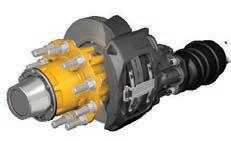


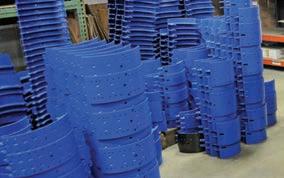

717 East Court Ave Des Moines, IA 50309 FAST & EASY ONLINE ORDERING AT WWW.MIDWESTWHEEL.COM ADB22X AIR DISC BRAKES MAXX22T™ TRAILER MAXXUS™ HEAVY DUTY TRUCK PAN17™ LIGHT DUTY TRAILER PAN19™ MEDIUM DUTY TRAILER PAN22™ HEAVY DUTY TRAILER AIR DISC BRAKES C88 / P89 INTEGRAL® P89 TAPER / PARALLEL / PLUS P89 INTEGRAL® Air Disc Brake EX225 L/S Series EX225H Series
Rapids, IA (800) 332-5435
Moines, IA (800) 888-0248
IA (800) 553-1886
Lake, IA (800) 397-5630
City, MO (800) 821-7402
MO (866) 318-9111
City, IA (800) 943-3534 Relined in Chariton, IA at Midwest Wheel’s MaxHD Remanufacturing Facility!
QUALITY CONTROL - PERFECT FIT TO THE SHOE TABLE AND BRAKE DRUM We offer RSD Lining from Abex & Bendix Ask about our MAX HD Brake Stop Boxes High Quality Brake hardware is included in the box to insure your MaxHD Brake reline gives you maximum life and performance to your wheel end. Springfield, MO (800) 785-3705
Cedar
Des
Davenport,
Clear
Kansas
Joplin,
Sioux
MAXIMUM HEAVY DUTY BRAKES



 Issue 1, 2023
Issue 1, 2023







































































































































